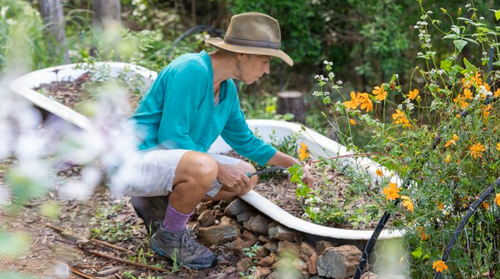
A woman in a wide-brimmed hat, turquoise long-sleeve shirt, shorts and boots crouches down tending to her lush garden. Some orange cosmos are in the foreground.
Urinary incontinence is uncontrolled leaking of urine (wee).
It’s not a disease, but a symptom of many other conditions.
It can vary in severity from:
- a bit of a leak every now and then—say a few drops when you sneeze, cough, or laugh
- to suddenly needing to pee urgently and not being able to make it to the toilet in time
- to having no control of your bladder at all.
There are different types of urinary incontinence, which can have different causes and symptoms.
It can affect people of all ages, and it can obviously have quite an impact on someone’s life.
On this page
- Daytime urinary incontinence in children
- Nocturnal urinary incontinence in children (bedwetting)
- Urinary incontinence in teenagers
- Urge or overactive bladder urinary incontinence
- Stress urinary incontinence
- Urinary retention
- Functional urinary incontinence
- Post-micturition urinary incontinence
- Getting help
- Management and treatment options
- More information
Daytime urinary incontinence in children
Most kids can control their bladders through the day by the age of four (bar the odd accident). If they continue to daytime wet regularly after this age, you should talk to your doctor, as the bladder may not be working normally.
Nocturnal urinary incontinence in children (bedwetting)
Bedwetting is the involuntary (outside of their control) passing of urine that occurs during the night while the child is sleeping. It’s important to know that it is not caused by the child or the child’s behaviour – they have no control over it. It can happen for a range of reasons:
- they don’t wake up when their bladder is full
- the bladder is overactive during sleep
- the kidneys make more urine than the bladder can hold during sleep
- an illness.
It can have powerful social and emotional effects on the child.
Kids develop at different rates, but most children will be dry through the night by seven or eight (school age). If your child is frequently wet after school age, or if they are upset about it and want it to stop, see your doctor. See your doctor if your child suddenly starts wetting the bed after they’ve been consistently dry. Incontinence can be linked to some illnesses.
Urinary incontinence in teenagers
Urinary incontinence tends to happen less as children get older, but some teens and young adults are affected by it. Talk to your doctor if your teenager is suffering from urinary incontinence.
Urge or overactive bladder urinary incontinence
This occurs when the bladder muscles contract outside of a person’s control. This causes a strong, sudden need to wee—hence the name. It’s also sometimes called urgency or overactive bladder incontinence. It happens when your brain tells your bladder to empty itself, even when it’s not full.

Stress urinary incontinence
Caused by pressure inside your lower body from activities combined with weak pelvic floor muscles. Physical activity such as coughing, sneezing, laughing, walking, and lifting can put pressure on the bladder.
The pelvic floor muscles help control the release of urine. If they’re weak or stretched (for example from childbirth), the pressure can cause urine to leak.
Urinary retention
When you can’t empty your bladder completely. A small amount of wee may leak on a regular basis.
Functional urinary incontinence
When the bladder is working fine but a person can’t get to the toilet because of a physical or cognitive condition. It is sometimes called disability-associated urinary incontinence.
Post-micturition urinary incontinence
When a small amount of urine dribbles after a person empties their bladder. It is most common in men and is often known as after-dribble.
Getting help
It’s important to know that many types of urinary incontinence can be prevented, easily managed, or treated.
The National Continence Helpline (1800 33 00 66) is a free telephone service. It’s staffed by nurse continence specialists. They offer free and confidential information, advice, and support.
Your doctor can help you identify the type of incontinence you may have. They can explain the causes, and provide you with prevention, management, and treatment options.
Management and treatment options
These options can include:
- avoiding alcohol and caffeine, or consuming excess fluids, especially before bed
- being aware some medications and over the counter or herbal products can cause incontinence
- practicing avoiding ‘just-in-case’ wees when the bladder is not full, or weeing in the shower
- bladder training—including keeping a bladder diary
- pelvic floor muscle exercises—important for women and men
- management or treatment of conditions that may cause incontinence:
- pregnancy
- menopause
- diabetes
- Parkinson’s disease
- stroke
- prostate issues or surgery
- constipation
- dementia
- and others.
- medication, surgery, or other treatments.
More information
- Urinary incontinence | Health Direct
- Continence Foundation of Australia | Urinary Incontinence
- Urinary incontinence | American Urological Association
- Urinary incontinence | Mayo Clinic
- What’s a bladder diary and when would you keep one? | Queensland Health
- How to find and exercise your pelvic floor muscles (for women and men) | Queensland Health